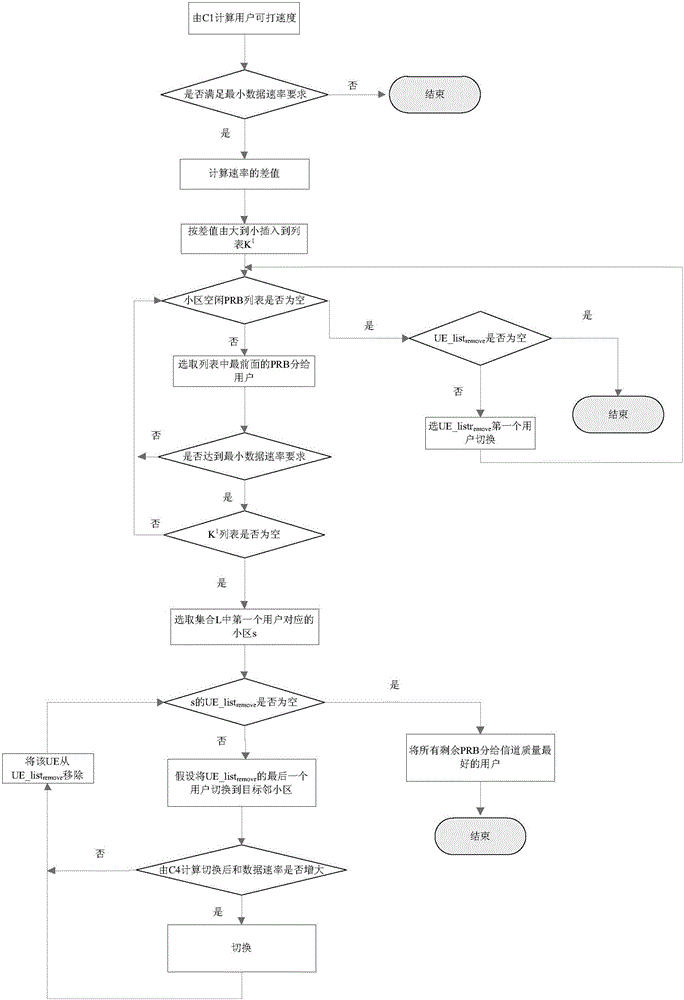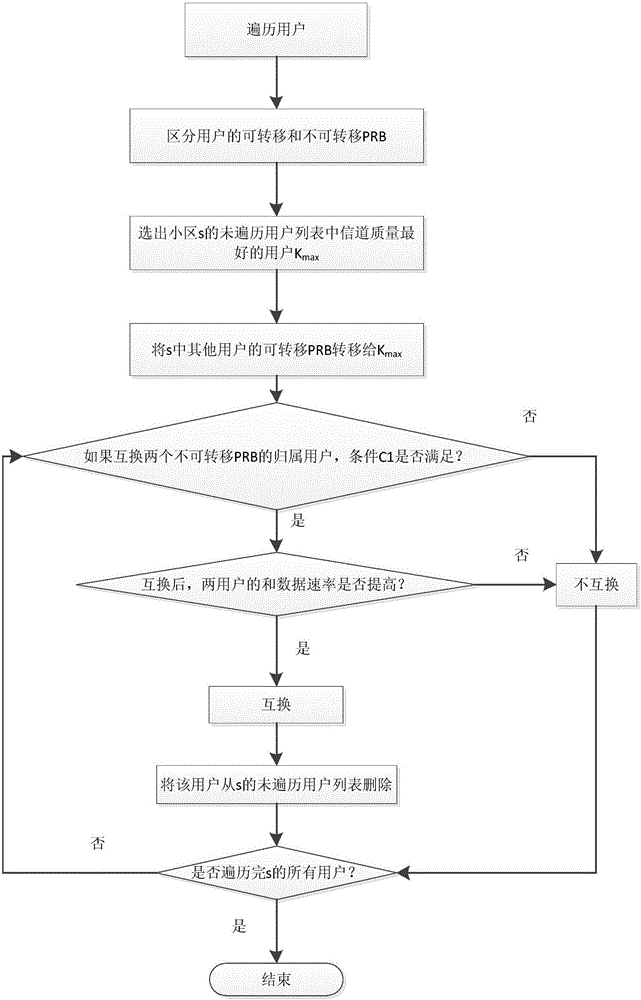Multi-cell resource allocation algorithm based on energy efficiency in LTE system
A resource allocation and multi-cell technology, which is applied in the direction of network traffic/resource management, energy consumption reduction, advanced technology, etc., can solve the problems of energy and other idle resource waste, failure to obtain attainable rate PRB, etc., to improve resource utilization , the effect of energy consumption reduction
- Summary
- Abstract
- Description
- Claims
- Application Information
AI Technical Summary
Problems solved by technology
Method used
Image
Examples
Embodiment Construction
[0024] In the method of the present invention, the adoption of the user switching algorithm between two cells is specifically described as: for a cell with the user with the best channel quality, switch the user with the poorest channel quality in the cell to the target cell, the The target cell can meet the minimum data rate requirements of the user being handed over, and the target cell exists in the neighbor list of the source cell; the adoption of the PRB transfer and exchange algorithm between users in the cell is specifically described as transferring the transferable PRB of other users For the user with the best channel quality in the cell, exchange non-transferable PRBs that can increase the sum data rate of the two users.
[0025] The first handover is to calculate whether each user meets the minimum data rate requirement, and allocate additional PRBs to users who do not meet the minimum data rate requirement. If there are not enough extra PRBs in the cell, switch the...
PUM
 Login to View More
Login to View More Abstract
Description
Claims
Application Information
 Login to View More
Login to View More - R&D
- Intellectual Property
- Life Sciences
- Materials
- Tech Scout
- Unparalleled Data Quality
- Higher Quality Content
- 60% Fewer Hallucinations
Browse by: Latest US Patents, China's latest patents, Technical Efficacy Thesaurus, Application Domain, Technology Topic, Popular Technical Reports.
© 2025 PatSnap. All rights reserved.Legal|Privacy policy|Modern Slavery Act Transparency Statement|Sitemap|About US| Contact US: help@patsnap.com



